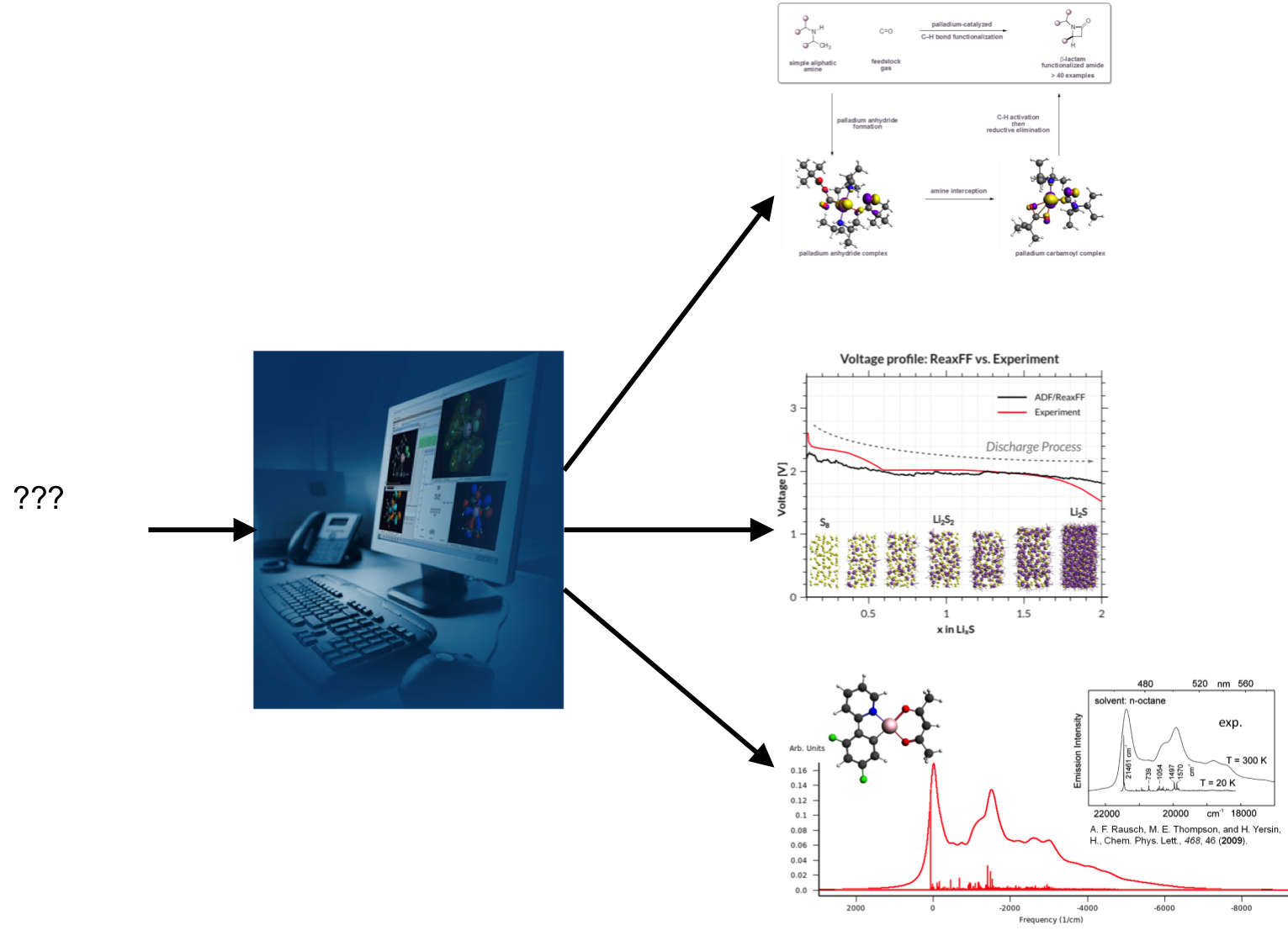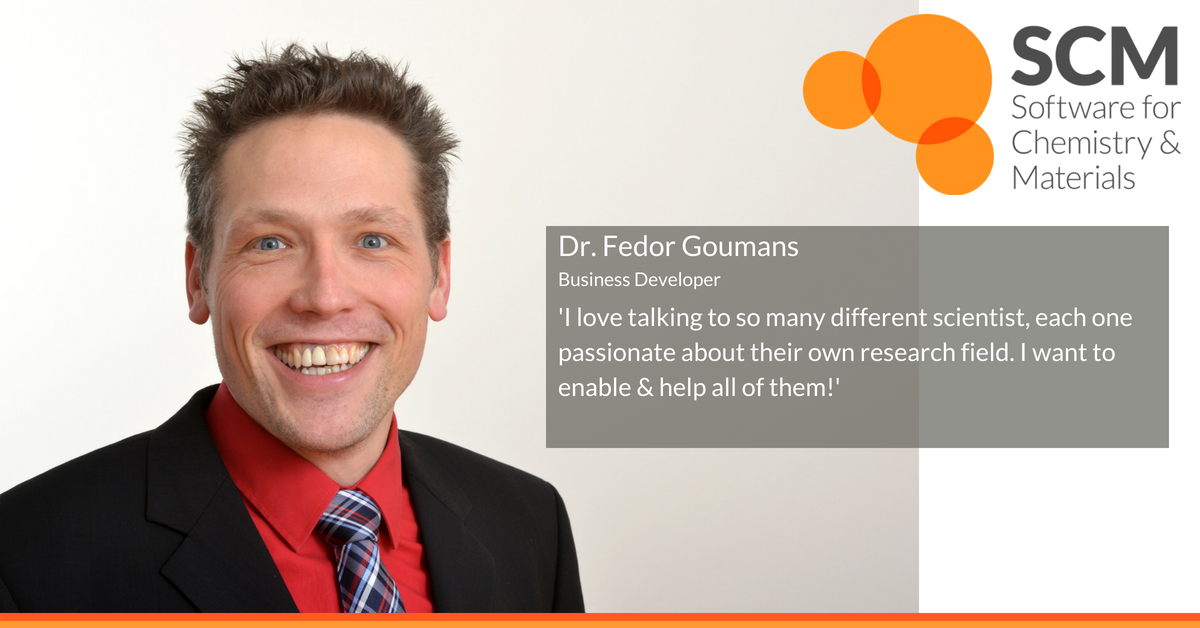Why use Computational Chemistry Software?
Computational chemistry software will strongly advance research by providing insight in reactivity and properties, and by predicting new molecules, materials or solvent mixtures. Especially by combining experimental with modeling efforts, experimental costs and time can be reduced and better performance achieved.
What can computational chemistry do for you?
Gain insight into why and how chemical reactions take place through simulations. Predict or properly assign the whole range of spectra from NMR through X-ray. Design new catalysts through rationally modifying ligands. Reduce the experimental search space for better OLED materials or solvent mixtures for formulations by canvassing out the best candidates.
We are happy to discuss your scientific challenges: leave your details below!

Computational chemistry: CPU & algorithms
Besides a vast and continuing increase in computational power over the last decades, software has been developed to deal with larger and more complex systems, and more properties are available (see also these workshop introduction slides). In the Amsterdam Modeling Suite we currently offer four broad classes of computational chemistry in a single software package with an integrated graphical user interface: DFT, tight-binding, force fields & continuum methods, which can be further organized:
- Atomistic methods
- Electronic structure methods
- Density Functional Theory (DFT)
- Tight-binding / Semi-empirical
- Force field / atomistic potentials
- Electronic structure methods
- Continuum models
Because of its accuracy and efficiency, DFT has gained a huge traction in chemistry as a pragmatic method, while it was originally used only in the physics community (see also: commemorating Tom Ziegler). It can be routinely applied to hundreds of atoms and to both molecular (ADF) and periodic systems (BAND) and includes many electronic structure based properties (spectroscopy, bonding analysis).
For quick calculations and larger systems the tight-binding methods can be used, either parameterized against DFT data (DFTB) or against experimental data (MOPAC). Calculations are typically 2-3 orders of magnitude faster than DFT.
Force-field methods are again 2-3 orders of magnitude faster than these methods, not employing any electronic structure, but using atomistic potentials. We specialize in the reactive force field ReaxFF, which enables studying chemically reacting systems, since they can deal with bond breaking and formation. We also offer the Universal Force Field (UFF), which can be a very quick method to pre-optimize many large systems. It has some extension to deal with MOF structures.
Continuum models deal with properties of infinite systems and in contrast to the other three methods do not deal with atomistic properties. We specialize in fluid thermodynamics (VLE, LLE) in our COSMO-RS module which also includes COSMO-SAC, UNIFAC and other predictors of properties. In materials modeling, also frequently continuum models are applied and the data coming out of our atomistic methods can be used here as well. These are usually mechanical data (stress/strain) but can also include electronic properties such as luminescence, charge transport, absorbance, etc.
